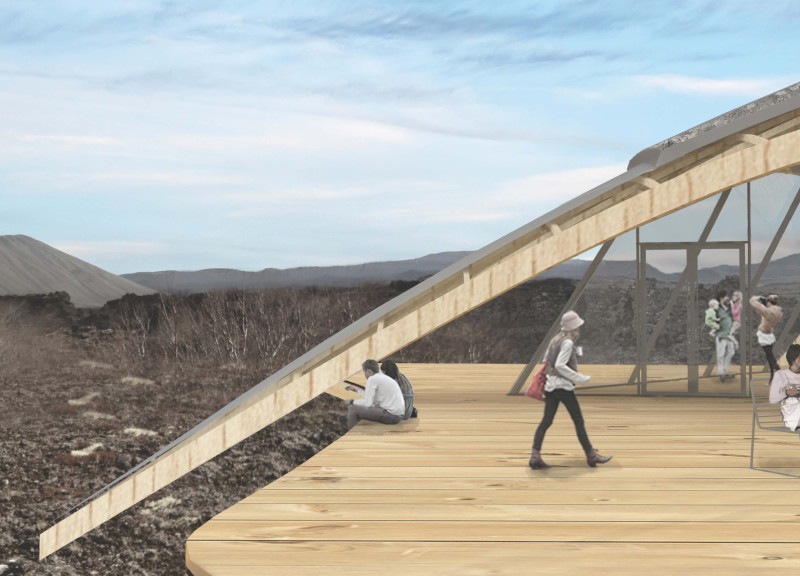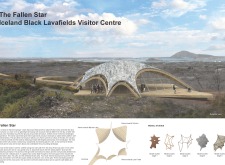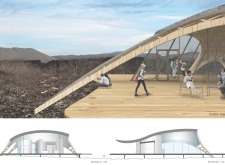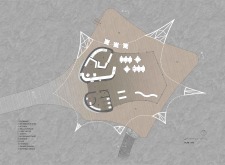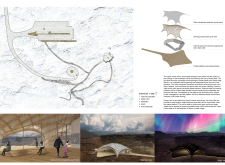5 key facts about this project
The Iceland Black Lavafields Visitor Centre, referred to as "The Fallen Star," is located in the unique landscape of Dimmuborgir, known for its dark lava fields. The design focuses on creating a lightweight structure that appears to have fallen from the sky, establishing a connection with the natural surroundings. As a visitor hub, it provides a place for education and relaxation amid exceptional geological formations.
Grid Shell Structure
The Visitor Centre features a grid shell roof that creates a spacious interior while offering views of the nearby lake and volcano. This self-supporting design employs timber lathes arranged in layers, combined with timber beams. It minimizes disturbance to the ground and allows for a strong visual link to the landscape. The raised platform design includes a ramp and steps, allowing visitors easy access into the building, which seamlessly integrates with the terrain.
Internal Layout
Inside, the layout is designed to include separate areas for visitor engagement. There is an information desk, a café, and exhibition spaces. These facilities encourage interaction and learning about the landscape's unique qualities. Adjacent areas are set aside for staff operations and public amenities, including a kitchen and restrooms, ensuring comfort for all visitors.
Sustainability Features
Sustainability is an important aspect of the design. Timber piles are used as the foundation, which keeps the disturbance to the ecological environment low. The exterior walls are made of straw bales contained in structural plywood casings, which helps with temperature control and supports sustainable practices. Below the raised platform, an organic water treatment system is proposed to recycle waste, promoting self-sufficiency in water use. Ground source heat pumps will also provide energy, further supporting the centre's ecological goals.
The design allows light to filter through the grid shell roof, creating interesting patterns of shadow and brightness in the interior. This interaction between light and space enhances the experience for visitors, deepening their connection to the captivating Icelandic landscape.


